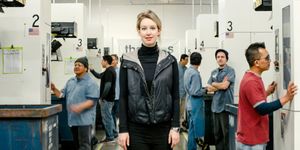Asha Patel of MIT, in collaboration with the University of Nottingham in the UK, describes her project, which won a Koch Institute Image Award this year. She and her team aim to check for materials that will support cells that are chemically and physiologically relevant to research studies, like cardiac muscle cells - cardiomyocytes - or stem cells.
In many such cell lines, scientists still aren't sure exactly what properties are crucial for the survival of a cell. A parallel, high-throughput screening technique allows them to check for characteristics that are influential or critical to certain cellular phenotypes.
They can look for materials and polymers that are able to support specific cells. For example, in cardiomyocytes they can culture in various ways, then stain for actin. Looking at the staining pattern in those cells, they would then be able to verify whether the cells are mature; that would tell them they would be experimenting on cells that most closely replicate the biological conditions as well as what culture conditions enabled the cell to mature.








